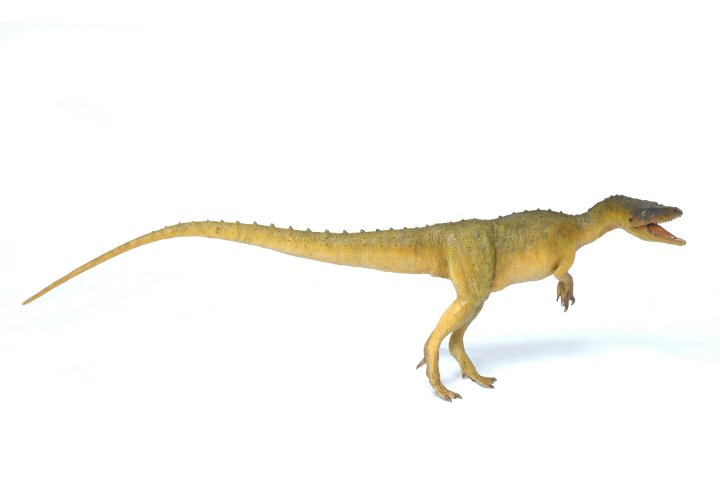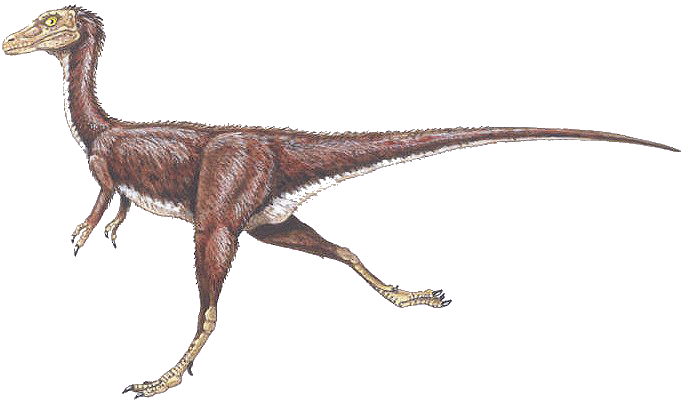
First discovered in Germany in the 1850's, the Compsognathus is one of the smallest dinosaurs known. From head to tail measured less than 1 m, and their bones were small and fragile. Fortunately for scientists, Compsognathus lived near the shore of a tranquil lake. After his death, some of these animals sank to the bottom of the lake and the still waters said they would not break the bones before they began the process of fossilization.
The Compsognathus was a bipedal animal. His long, thin hind legs showed that it was adapted for the race. His body was shaped like a barrel and abdominal ribs had put up with the intestine and other organs. The front legs were also long and thin and hand consisted of two long fingers and a third reduced to just a lump. The Compsognathus could have used his hands as hooks or fastening tools for capturing prey.

Small dams
his skull features give us the keys to Compsognathus diet. The teeth are sharp and pointed, but the lower jaw and skull are quite elongated and not particularly strong. His favorite food could be small vertebrates such as lizards and mammals and insects. In a German specimen of Compsognathus is preserved skeleton of a small lizard in the body cavity. Their presence suggests that the Compsognathus was a predator movements agile and quick, able to identify and hunt even small and elusive prey such as lizards.
The exception to the rule
The popular belief is that large dinosaurs were reptiles that lived in prehistoric times surrounded by high vegetation, but with this kind of dinosaur can be seen that they were not all enormous, but some like Compsognathus were smaller than a dog today.
 The Compsognathus was the hollow leg bones, skull and a long tail light and thin that extended straight back.
The Compsognathus was the hollow leg bones, skull and a long tail light and thin that extended straight back. SHEET
Gender: Compsognathus
Rating: Theropoda; Coelurosauria; Compsognathidae
Length: 60-100 cm
Height: 60 cm
Weight: 2.5 Kg
Period: Jurásicop late, about 156-150 million years s
Found: Bavaria (Germany) and southern France.

Source: Larousse of the dinosaurs.